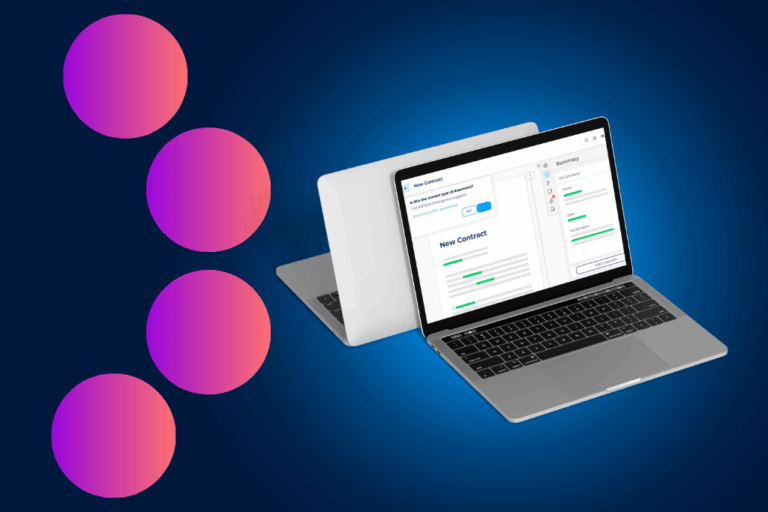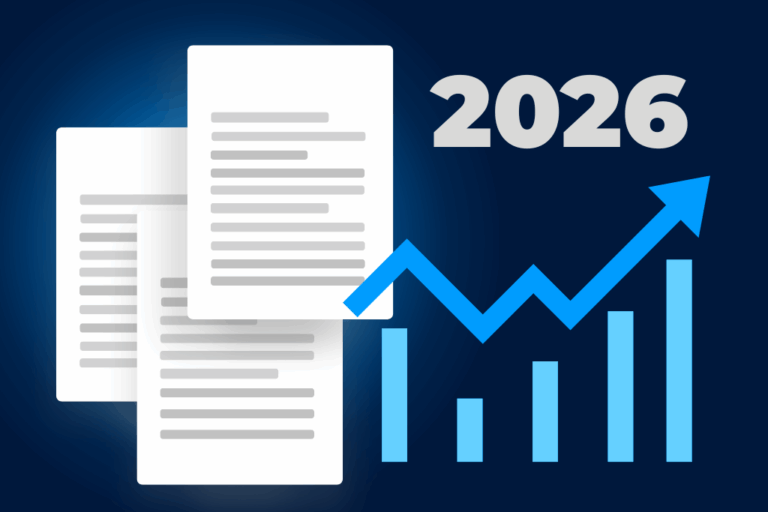This is the third and last installment of our series on Implementing a CLM solution. In this article we’ll explore the last steps of the implementation phase, which does not mean the CLM journey is done. Indeed, by onboarding teams to your new CLM you are embarking on another important phase. Indeed, teams will start using the tool, but it is also the beginning of collecting feedback to enhance your solution as much as possible for the long term.
Onboarding phase
Once the system is configured, the onboarding phase kicks off. During this phase, teams will receive structured training, supported by documentation, to explore and test the solution in real-world scenarios while providing valuable feedback. While this isn’t the official go-live, it’s a critical time to help users get comfortable with the tool, address any usability issues, and ensure a smooth transition to full adoption.
Change management efforts should be at their peak during this phase—helping users get comfortable with the new system, tackling any challenges, and ensuring a smooth transition to full adoption.
Training
Our CLM provider will typically focus on training the key users so that they can pass on the knowledge. Specifically, this includes key stakeholders such as sponsors, key users, and administrators. As a result, these individuals will become system experts and internal champions, guiding the other teams through the transition.
Training Approach
Depending on your company size and the number of users intended to use the tool, the CLM provider will take one of two approaches:
- If the user group is small, they will train all users at the same time. Although team members may use the CLM differently, training everyone together helps collaborators understand how their colleagues utilize the tool and the challenges they may encounter during the onboarding phase.
- However, if teams are too large, they will adopt a “train the trainer” approach. This method focuses on training a small group of key users who are well-positioned internally to pass on the learning and best practices. Consequently, this ensures knowledge is effectively spread throughout the organization, which is particularly valuable in large-scale implementations.
Ensuring a Successful Training Rollout
To ensure a smooth training rollout, it is essential to develop a detailed plan based on the use cases identified during the design phase. First, identify user groups and target audiences. Then, customize training sessions to meet their specific needs and roles, focusing on the most relevant use cases. In addition, integrate hands-on testing exercises within the training to provide practical experience. This will allow users to explore real use-case scenarios and better grasp how the system works during and after the onboarding phase.
Documentation
Creating comprehensive documentation is crucial for helping users fully understand and maximize the CLM tool’s capabilities.
This documentation should include:
- Process documentation: Clear instructions on approval workflows, contract creation processes, and automation rules. These should be documented internally to maintain consistency.
- FAQs: Answers to common questions and solutions to typical issues users may encounter. Usually, the CLM provider will either hand this over or share access to a dedicated page.
- Best practices: Practical tips and guidelines for optimizing contract management processes.
To streamline this process, build documentation progressively during the configuration phase rather than waiting until the end. That way, users will have access to the relevant materials as features are rolled out. Furthermore, many CLM solutions offer templates to simplify documentation and make it easier to record and share essential workflows and rules.
Feedback Collection
Collecting feedback from users should be an ongoing process.
First, regularly gather insights on challenges, usability issues, and suggestions for improvement. Next, organize feedback by categorizing comments into key themes or topics. After that, prioritize the most critical issues based on their impact and frequency.
Finally, use this information to guide future optimizations and system enhancements. By continuously refining the system based on user input, organizations can ensure a smoother and more efficient CLM experience.
Expected Outcomes
By the end of the onboarding phase, your organization should have achieved the following:
Furthermore, valuable user feedback will be collected. Users should feel confident and empowered to provide constructive insights on system usability, challenges, and potential improvements. As a result, this feedback will drive continuous system optimizations as you move forward with the implementation.
First and foremost, key users will act as official trainers. Each time a new feature or module is deployed, these champions will train the new users, thereby ensuring a successful transition and consistent knowledge transfer.
Additionally, all users will have access to comprehensive, up-to-date documentation. This includes clear, practical, and well-organized resources such as process guides, step-by-step tutorials, FAQs, and best practices.
Moreover, real-life scenarios will be tested. For example, contract approvals, clause updates, and e-signature processes will confirm that the solution meets daily operational requirements and ensures it works as expected in practice.
5 tips for effective change management:
Communicate early and often: Keep stakeholders informed with regular updates to build excitement and reduce uncertainty.
Leverage success stories: Share early wins to demonstrate the tool’s value and motivate others.
Visible leadership support: Ensure leaders and the project sponsor actively advocate for the change to show its importance.
Ongoing training and support: Offer continuous training and resources to boost confidence and adoption.
Encourage and act on feedback: Regularly gather and act on user feedback to drive engagement.
Go-live phase
The go-live phase marks the official launch of your CLM solution, expanding access to all users across the organization, not just the key users. This is when the tool becomes integrated into your teams’ daily workflows, fully transitioning contract management processes to the new system.
At this stage, a handover takes place between the project manager and the account manager. The account manager becomes your primary point of contact. The account manager is key to ensuring long-term success, offering ongoing support, addressing new requirements, and gathering feedback to optimize the solution as your organization’s needs evolve from the onboarding phase onwards.
In some cases, the CLM project manager may stay involved for the first 2-3 months after
go-live. This transitional period helps ensure a smooth handover, with the project manager introducing the account manager, assisting with troubleshooting, and resolving any immediate post-launch issues.
Go-live can be phased in to reduce risk. By gathering feedback from the first user group, you can make adjustments to the tool and ensure faster adoption for the next group of users.
Monitoring
Once the solution is live, it’s essential to monitor its adoption and performance to ensure that it delivers on expectations.
Track user adoption: Assess how teams are using the system in their daily tasks. Identify any areas where additional training or clarification might be needed to improve confidence and productivity.
Monitor system performance: Keep an eye on system responsiveness, workflows, and integrations to ensure everything operates smoothly. Address any technical issues promptly to avoid disruption.
Measure against KPIs: Evaluate the system’s performance against the KPIs defined during the design phase. Metrics such as contract cycle time and compliance tracking will help measure success and pinpoint opportunities for improvement.
Spot quick wins and share them to showcase the tool’s value to teams. Sharing these successes not only builds momentum but also drives continued adoption throughout the organization after the onboarding phase.
Expected outcomes
By the end of the go-live phase, your organization should have achieved the following:
Full system access for all users: The CLM solution is fully accessible to all users, not just key stakeholders, enabling teams across the organization to manage contracts efficiently as part of their daily workflows.
Initial adoption across teams: Teams are actively using the CLM solution, with workflows, templates, and automated features integrated into their processes. Early user engagement sets the foundation for broader organizational adoption.
Validated system performance: Core functionalities, integrations, and workflows operate smoothly, with no significant issues. System performance and user experience are monitored closely to identify and resolve any early concerns.
The go-live phase is not the end of your CLM journey—it’s just the beginning. You will need to keep it running, what does it mean? Review and refine workflows over time, gather user feedback to make the CLM evolve, update and add contract templates and feed the clause libraries. To sum it up, keep it living.
Conclusion
We’ve covered several key phases of your CLM implementation journey: the design phase, where you assess needs and set clear objectives; the configuration phase, where the system is customized and integrated with your tools; the data-recovery phase, where legacy data is transferred; and the onboarding phase, where users are trained and engaged in hands-on testing. Finally, the go-live phase marks the official launch, fully integrating the solution into daily workflows and monitoring performance for ongoing success.
Each of these phases is critical to ensuring successful implementation. By managing each step effectively and prioritizing change management throughout, you can guarantee long-term success and continuous optimization of the CLM solution to meet your organization’s evolving needs.
As you move forward, DiliTrust offers an intuitive, AI-powered CLM solution designed to streamline contract management processes. With seamless integrations, robust automation, and a secure, compliant environment, DiliTrust helps you manage contracts with ease.
Ready to take the next step? Book a meeting with us today to discover how DiliTrust CLM can be tailored to your organization’s needs and drive your contract management success.


